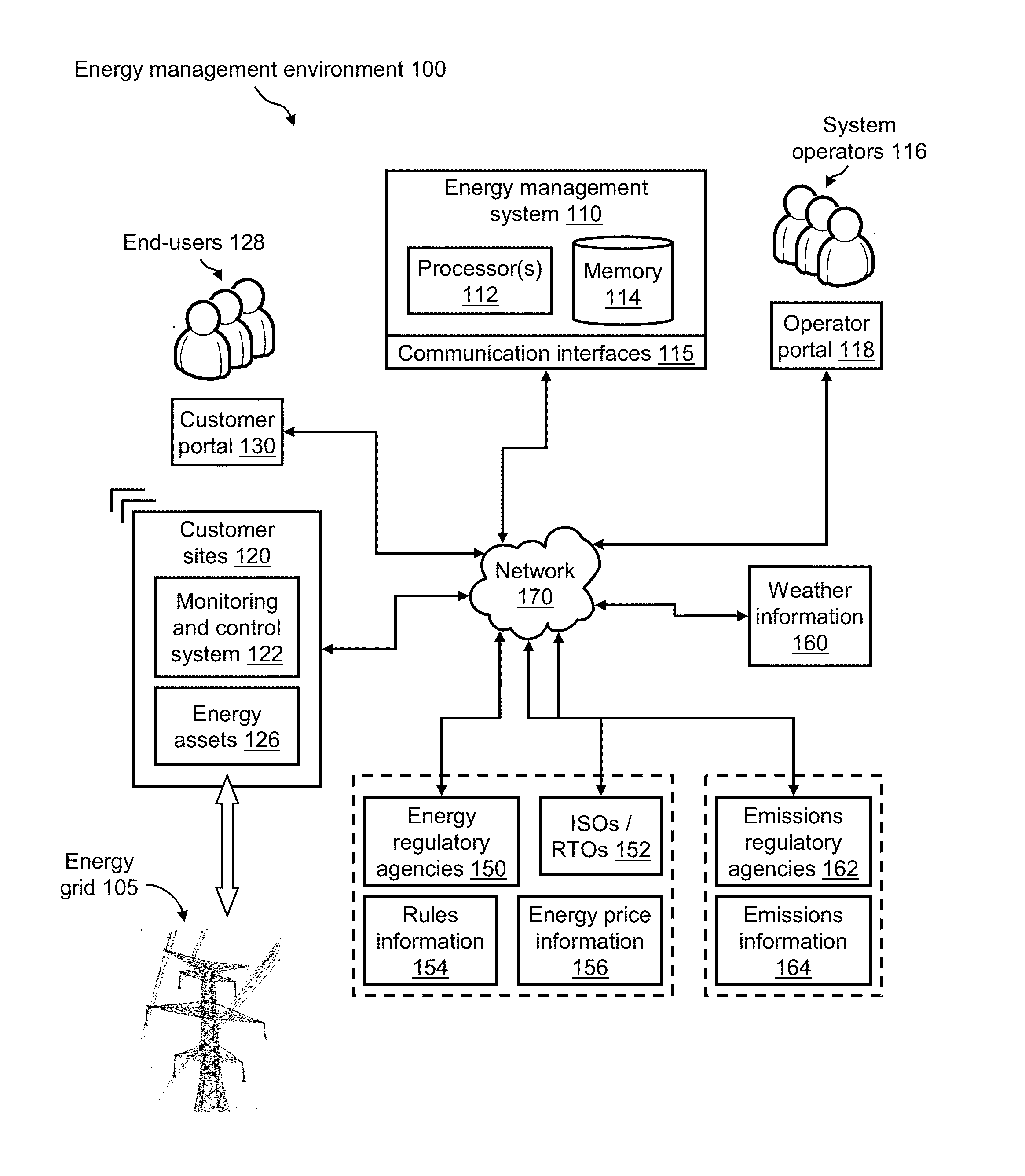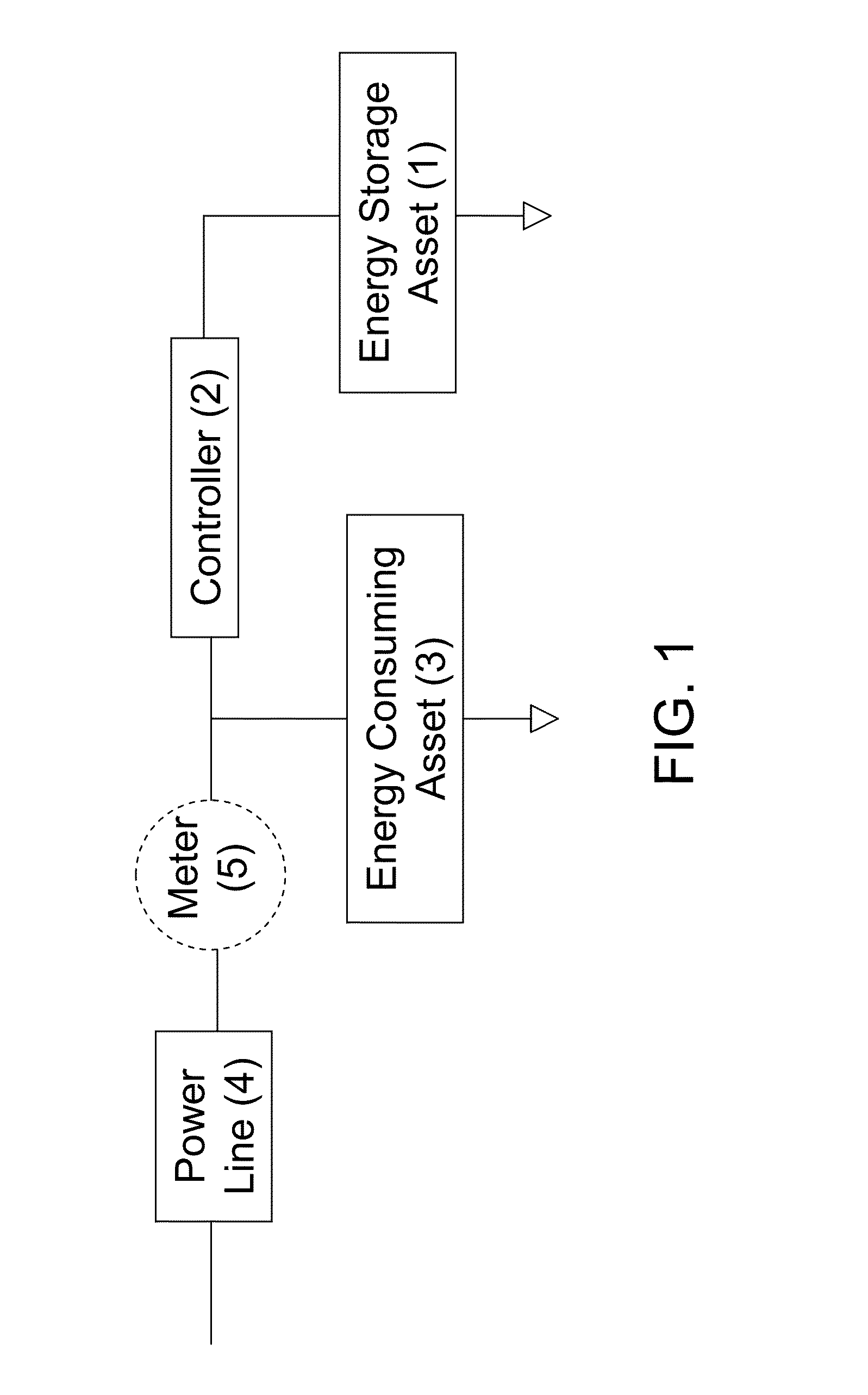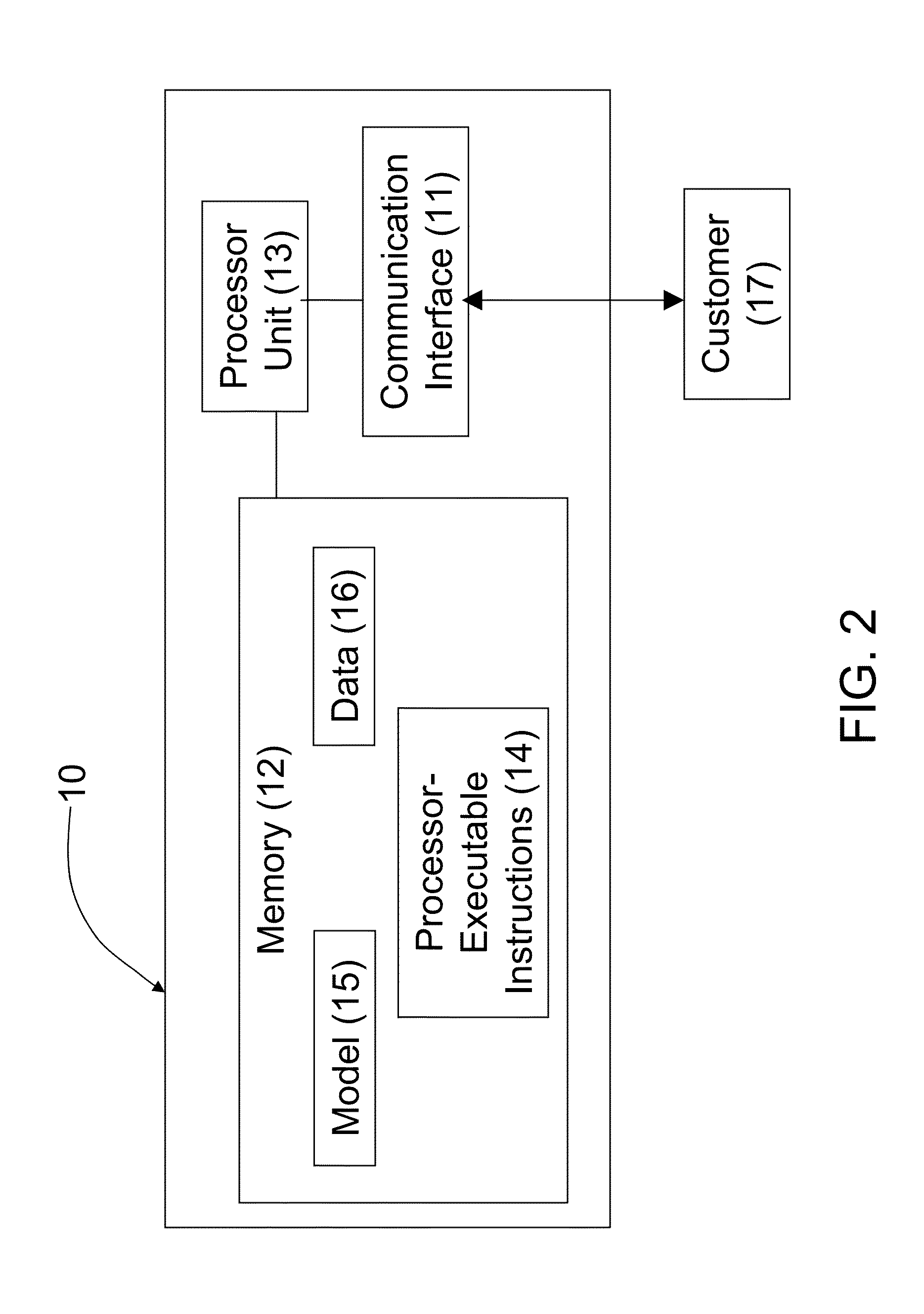Facilitating revenue generation from wholesale electricity markets
a technology of electricity market and revenue generation, applied in non-electric variable control, process and machine control, instruments, etc., can solve the problems of not purchasing and installing batteries, distributing energy into the grid rather than just being on call, and avoiding battery replacement and installation. , to achieve the effect of reducing the net energy-related cos
- Summary
- Abstract
- Description
- Claims
- Application Information
AI Technical Summary
Benefits of technology
Problems solved by technology
Method used
Image
Examples
Embodiment Construction
[0122]Following below are more detailed descriptions of various concepts related to, and embodiments of, inventive methods, apparatus, and systems for determining a suggested operating schedule for energy assets to facilitate revenue generation from wholesale electricity markets. It should be appreciated that various concepts introduced above and discussed in greater detail below may be implemented in any of numerous ways, as the disclosed concepts are not limited to any particular manner of implementation. Examples of specific implementations and applications are provided primarily for illustrative purposes.
[0123]As used herein, the term “includes” means includes but not limited to, the term “including” means including but not limited to. The term “based on” means based at least in part on.
[0124]As used herein, the term “in communication with” includes direct communication between elements as well as indirect communication between the elements, such as by means of at least one inte...
PUM
 Login to View More
Login to View More Abstract
Description
Claims
Application Information
 Login to View More
Login to View More - R&D
- Intellectual Property
- Life Sciences
- Materials
- Tech Scout
- Unparalleled Data Quality
- Higher Quality Content
- 60% Fewer Hallucinations
Browse by: Latest US Patents, China's latest patents, Technical Efficacy Thesaurus, Application Domain, Technology Topic, Popular Technical Reports.
© 2025 PatSnap. All rights reserved.Legal|Privacy policy|Modern Slavery Act Transparency Statement|Sitemap|About US| Contact US: help@patsnap.com



